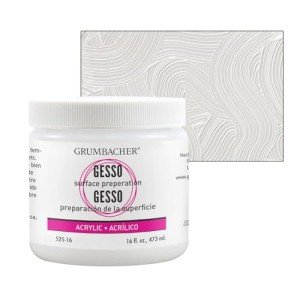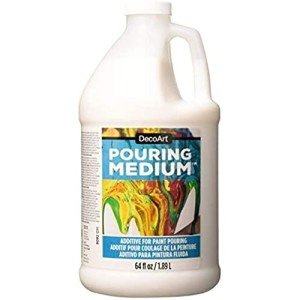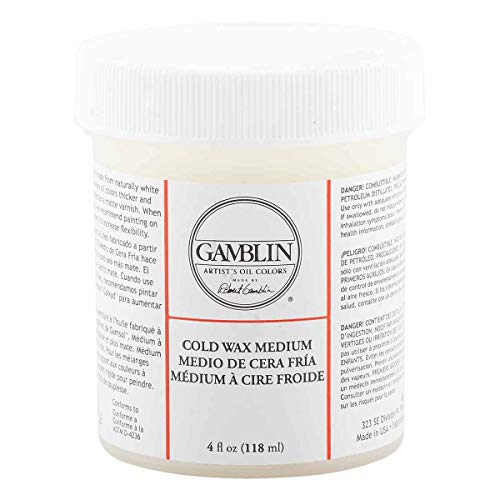Introduction
Artistry thrives on the canvas of creativity, but behind every stroke lies the foundation of art supplies. From the vibrant hues of paints to the delicate precision of brushes, these tools are the lifeblood of artistic expression. In the realm of art supplies, two distinct categories dominate the landscape: professional and student grade.
Setting the Stage: The Significance of Art Supplies in the Creative Process
Art supplies are not mere tools; they are conduits for imagination, enabling artists to translate their visions into tangible masterpieces. The choice of materials can profoundly impact the outcome of an artwork, influencing everything from color vibrancy to texture and longevity. For artists, the selection of art supplies is akin to selecting the perfect instrument for a symphony—the right choice can elevate a piece to new heights of brilliance.
Overview of the Distinction Between Professional and Student Grade Supplies
Within the realm of art supplies, a dichotomy exists between professional and student grade materials. Professional grade supplies are crafted to meet the exacting standards of seasoned artists, offering superior quality, durability, and performance. On the other hand, student grade supplies cater to beginners and learners, providing affordability and accessibility without sacrificing basic functionality.
In this article, we delve into the nuances of professional versus student grade art supplies, exploring their characteristics, performance, and suitability for different artistic endeavors. By understanding the distinctions between these two categories, artists can make informed decisions that align with their creative aspirations and budgetary constraints.
Understanding Professional Grade Art Supplies
Definition and Characteristics
Professional grade art supplies represent the pinnacle of quality and craftsmanship in the artistic realm. These materials are meticulously crafted using premium ingredients and manufacturing processes to meet the rigorous demands of professional artists. From paints to pencils and brushes, professional grade supplies are designed to deliver unparalleled performance, allowing artists to achieve their creative vision with precision and finesse.
Quality Standards and Performance Expectations
At the heart of professional grade art supplies lies a commitment to excellence. Manufacturers adhere to strict quality standards, ensuring that each product meets or exceeds the expectations of discerning artists. Whether it's the intensity of pigment in paints, the smoothness of graphite in pencils, or the resilience of bristles in brushes, professional grade materials consistently deliver superior results, enabling artists to produce artwork of exceptional quality.
Examples Across Various Mediums (Paints, Pencils, Brushes, etc.)
Professional grade art supplies span a diverse range of mediums, each tailored to the unique needs of artists working in different styles and techniques:
Paints: Professional grade paints boast rich pigments and finely ground particles, resulting in vibrant colors and smooth, consistent coverage. Whether oil, acrylic, or watercolor, these paints offer superior lightfastness, permanence, and blendability, allowing artists to create stunning works that stand the test of time.
Pencils: Professional grade pencils are crafted from high-quality graphite or colored cores, encased in premium wood or other materials for optimal durability and performance. With precise lead grades and minimal breakage, these pencils offer unmatched control and versatility, making them indispensable tools for drawing, sketching, and shading.
Brushes: Professional grade brushes feature meticulously crafted bristles, carefully selected for their resilience, spring, and shape retention. Whether synthetic or natural, these brushes offer exceptional control and fluidity, enabling artists to execute intricate details and expressive strokes with ease.
Cost Considerations and Investment Mindset
While professional grade art supplies typically command a higher price point than their student grade counterparts, they are regarded as worthy investments by serious artists. The superior quality, performance, and longevity of these materials justify their higher cost, offering artists a valuable toolkit for realizing their artistic vision to its fullest potential. Moreover, the durability and reliability of professional grade supplies often translate into long-term savings, as artists can create more artworks with fewer replacements.
In essence, professional grade art supplies embody a philosophy of quality over quantity, encouraging artists to prioritize excellence and craftsmanship in their creative pursuits. By investing in these premium materials, artists not only elevate the quality of their artwork but also demonstrate a commitment to their craft and a reverence for the transformative power of art.
Exploring Student Grade Art Supplies
Definition and Intended Use
Student grade art supplies cater primarily to beginners, learners, and hobbyists who are exploring their artistic interests without the need for professional-level materials. These supplies are designed to be accessible, affordable, and user-friendly, making them ideal for individuals who are still honing their skills or experimenting with different mediums. While they may not offer the same level of quality and performance as professional grade supplies, student grade materials provide a practical starting point for aspiring artists to explore and develop their creativity.
Quality Variations and Limitations
Student grade art supplies typically exhibit a range of quality variations and limitations compared to their professional grade counterparts. While they may offer satisfactory performance for basic artistic tasks, such as sketching, coloring, and crafting, they often lack the premium ingredients, precision manufacturing, and advanced features found in professional grade materials. As a result, student grade supplies may have inconsistencies in color intensity, pigment concentration, durability, and blendability, limiting their suitability for more demanding or refined artistic techniques.
Budget-Friendly Alternatives for Beginners and Learners
One of the primary advantages of student grade art supplies is their affordability, making them accessible to individuals with limited budgets or those who are hesitant to invest heavily in art materials until they have developed their skills further. Manufacturers of student grade supplies often prioritize cost-effective production methods and materials, allowing them to offer products at lower price points without compromising basic functionality. This affordability makes student grade art supplies an attractive option for beginners seeking to explore different mediums or experiment with various artistic styles without breaking the bank.
Balancing Affordability with Artistic Goals
For aspiring artists, striking a balance between affordability and artistic goals is essential when selecting art supplies. While student grade materials offer a cost-effective entry point into the world of art, it's important to recognize their inherent limitations and consider how these factors align with one's artistic aspirations and growth trajectory. As skills develop and artistic ambitions evolve, artists may find themselves gradually transitioning to professional grade supplies to achieve higher levels of performance and expressiveness in their artwork. However, for those who prioritize affordability and practicality, student grade art supplies can continue to serve as valuable tools for creative exploration and expression.
In essence, student grade art supplies provide a gateway for beginners to embark on their artistic journey, offering a balance between accessibility and affordability. While they may not offer the same level of quality and performance as professional grade materials, student grade supplies empower aspiring artists to unleash their creativity and pursue their passion for art without financial barriers.
Comparing Performance and Output
Examination of Output Quality Between Professional and Student Grade Supplies
One of the most significant considerations for artists when selecting art supplies is the quality of the output they can achieve. Professional grade art supplies are renowned for their ability to deliver exceptional results, characterized by vibrant colors, precise details, and long-lasting durability. In contrast, student grade supplies may produce satisfactory outcomes for basic artistic tasks but often fall short in terms of depth, richness, and overall aesthetic appeal.
Factors Influencing Performance
Several factors influence the performance of art supplies, regardless of grade. These factors play a crucial role in determining the quality of the output and the overall satisfaction of the artist:
Pigment Intensity: Professional grade supplies are formulated with high-quality pigments that offer superior color intensity and saturation. This results in artwork with vibrant hues and rich tonal variations. In contrast, student grade supplies may contain lower-quality pigments, leading to colors that appear dull or washed out.
Durability: The durability of art supplies is essential for ensuring the longevity of the artwork. Professional grade materials are known for their resilience and archival quality, allowing artworks to withstand the test of time without fading or deteriorating. Student grade supplies, while functional, may be more prone to fading or degradation over time, especially when exposed to environmental factors such as light, moisture, or handling.
Blendability: The ability to blend colors seamlessly is crucial for creating smooth transitions and nuanced effects in artwork. Professional grade paints, pencils, and pastels are engineered for optimal blendability, enabling artists to achieve subtle gradations and soft transitions between colors. Student grade supplies may exhibit limited blendability, resulting in streaky or uneven color application.
Real-Life Examples and Case Studies
Real-life examples and case studies provide valuable insights into the performance differences between professional and student grade art supplies. By comparing artworks created using each type of material, artists can observe firsthand the impact of quality on the final outcome.
For instance, a professional artist may create two identical paintings—one using professional grade paints and the other using student grade paints. By closely examining the color vibrancy, texture, and overall visual impact of each artwork, observers can discern the subtle nuances and differences between the two. Similarly, case studies involving different mediums, such as graphite pencils or oil pastels, can highlight the varying levels of performance and output quality associated with professional and student grade supplies.
Ultimately, comparing performance and output between professional and student grade art supplies offers valuable insights for artists seeking to elevate their work and achieve the desired aesthetic results. By understanding the factors that influence performance and the real-life implications of using different types of materials, artists can make informed decisions that align with their artistic vision and goals.
Considerations for Artists
Assessing Individual Needs and Goals
Every artist has unique preferences, styles, and artistic goals, and it's essential to assess these factors when choosing art supplies. Considerations such as preferred mediums, desired outcomes, budget constraints, and personal artistic journey all play a role in determining the most suitable materials. By taking stock of individual needs and goals, artists can make informed decisions that align with their creative vision and aspirations.
Importance of Experimentation and Adaptation
Artistry is a journey of exploration and discovery, and experimentation is a crucial component of artistic growth. Artists are encouraged to explore different mediums, techniques, and styles, pushing the boundaries of their creativity and expanding their artistic horizons. Through experimentation, artists can gain valuable insights into the unique properties and capabilities of different art supplies, discovering new ways to express themselves and refine their craft.
Additionally, adaptation is key to navigating the ever-evolving landscape of art supplies. As artists progress in their journey and their skills develop, they may find themselves drawn to different mediums or techniques that require a shift in the types of materials they use. Embracing this process of adaptation allows artists to stay flexible and responsive to their changing artistic interests and needs.
Tips for Transitioning Between Grades Based on Skill Level and Project Requirements
Transitioning between professional and student grade art supplies requires careful consideration of skill level, project requirements, and budgetary constraints. Here are some tips to help artists navigate this transition effectively:
Assess Skill Level: Consider your current skill level and artistic proficiency when choosing art supplies. Beginners may benefit from starting with student grade materials to build foundational skills and gain confidence before transitioning to professional grade supplies as their skills develop.
Evaluate Project Requirements: Tailor your choice of art supplies to the specific requirements of each project. For high-stakes or professional-level work, investing in professional grade materials may be justified to achieve optimal results. However, for casual or experimental projects, student grade supplies may suffice, offering a budget-friendly option without compromising artistic integrity.
Gradual Transition: Transitioning between grades doesn't have to happen all at once. Gradually incorporate professional grade supplies into your toolkit as you feel ready and as project demands dictate. Start by investing in key items that will have the most significant impact on your work, such as paints, pencils, or brushes, and gradually expand your collection over time.
Seek Guidance and Feedback: Don't hesitate to seek guidance and feedback from experienced artists or art educators when navigating the transition between grades. They can offer valuable insights, recommendations, and techniques for maximizing the potential of professional grade materials and integrating them effectively into your artistic practice.
By carefully assessing individual needs and goals, embracing experimentation and adaptation, and strategically transitioning between grades based on skill level and project requirements, artists can confidently navigate the dynamic landscape of art supplies, unlocking new possibilities for creative expression and growth.
Sustainability and Ethical Considerations
Environmental Impact of Different Grades of Art Supplies
The production and use of art supplies can have varying degrees of environmental impact, depending on factors such as raw material sourcing, manufacturing processes, and disposal methods. While both professional and student grade art supplies contribute to resource consumption and waste generation, the scale and intensity of their environmental footprint can differ significantly.
Professional grade art supplies often prioritize quality and performance, leading to the use of higher-grade materials and more complex manufacturing processes. While these materials may offer superior durability and longevity, they can also result in greater resource extraction, energy consumption, and waste generation throughout their lifecycle.
In contrast, student grade art supplies are typically designed with affordability and accessibility in mind, leading to simpler production methods and lower-cost materials. While this may reduce the environmental impact per unit of product, the mass production and consumption of student grade supplies can still contribute to environmental degradation, particularly if materials are sourced unsustainably or if products are discarded after limited use.
Support for Sustainable Practices Within the Art Community
Increasingly, artists and art supply manufacturers are recognizing the importance of sustainability and adopting practices that minimize environmental impact. From using recycled materials and eco-friendly packaging to reducing carbon emissions and supporting renewable energy sources, there is a growing movement within the art community to promote sustainability throughout the supply chain.
Artists can support sustainable practices by choosing art supplies from companies that prioritize environmental stewardship and transparency in their operations. By seeking out products certified by third-party organizations such as the Forest Stewardship Council (FSC) or the Sustainable Forestry Initiative (SFI), artists can ensure that their materials are sourced from responsibly managed forests and adhere to rigorous environmental standards.
Additionally, artists can reduce waste and minimize their ecological footprint by practicing mindful consumption, recycling or repurposing materials whenever possible, and exploring alternative methods of artistic expression that prioritize sustainability, such as digital art or eco-friendly printmaking techniques.
Ethical Sourcing and Production
In addition to environmental considerations, ethical sourcing and production are essential aspects of responsible art supply manufacturing. This includes ensuring fair labor practices, supporting local artisans and communities, and avoiding materials sourced from environmentally sensitive or conflict-affected regions.
Artists can support ethical sourcing and production by researching the ethical practices of art supply manufacturers and choosing products from companies that prioritize fair trade, worker rights, and social responsibility. By advocating for transparency and accountability within the art supply industry, artists can contribute to a more sustainable and ethical future for art production worldwide.
In conclusion, sustainability and ethical considerations are increasingly important factors in the selection and use of art supplies. By supporting companies that prioritize environmental stewardship, promoting sustainable practices within the art community, and advocating for ethical sourcing and production, artists can play a vital role in shaping a more sustainable and responsible future for artistry.
Navigating the Market
Tips for Researching and Selecting Art Supplies
Define Your Needs: Before diving into the market, clarify your artistic goals, preferred mediums, and specific requirements for each project. This will help narrow down your options and focus your search on relevant art supplies.
Read Reviews and Recommendations: Take advantage of online reviews, artist forums, and social media groups to gather insights from fellow artists. Pay attention to feedback on quality, performance, and durability to inform your purchasing decisions.
Compare Prices and Options: Shop around and compare prices from different retailers to ensure you're getting the best value for your money. Don't forget to consider factors such as shipping costs, return policies, and customer service when evaluating vendors.
Try Before You Buy: Whenever possible, test out art supplies in person before making a purchase. Visit local art supply stores or attend art fairs and exhibitions to get hands-on experience with different materials and brands.
Seek Expert Advice: Don't hesitate to consult with art educators, professional artists, or knowledgeable sales associates for guidance and recommendations. Their expertise can provide valuable insights and help you make informed choices.
Understanding Product Labels and Descriptions
Ingredients and Materials: Pay attention to the ingredients and materials used in art supplies, especially if you have allergies or sensitivities. Look for products labeled as non-toxic, eco-friendly, or made from sustainable sources.
Performance Attributes: Product labels and descriptions often highlight key performance attributes such as lightfastness, opacity, viscosity, and drying time. Familiarize yourself with these terms to ensure the chosen supplies meet your specific artistic requirements.
Certifications and Standards: Look for certifications and standards indicating quality, safety, and environmental responsibility. Common certifications include ASTM D4236 (for non-toxicity) and AP (Approved Product) Seal from ACMI (Art & Creative Materials Institute).
Usage Instructions: Take note of usage instructions and recommended techniques provided by the manufacturer. Understanding proper application methods and care instructions can help optimize the performance and longevity of your art supplies.
Leveraging Online Resources and Community Feedback
Online Retailers: Explore online retailers specializing in art supplies, which often offer a wide selection of products, competitive prices, and convenient shipping options. Take advantage of customer reviews and ratings to gauge product satisfaction and reliability.
Artist Communities: Join online communities and forums dedicated to artistry, where you can connect with fellow artists, share insights, and seek advice on art supplies. Participate in discussions, ask questions, and contribute to the collective knowledge base of the community.
Video Reviews and Tutorials: Watch video reviews and tutorials on platforms like YouTube, where artists demonstrate and review various art supplies. These visual resources can provide valuable demonstrations of product performance and practical tips for usage.
Social Media Platforms: Follow artists, art supply brands, and art-related hashtags on social media platforms like Instagram, Twitter, and Pinterest. Engage with posts, share your own experiences, and stay informed about the latest trends and developments in the art supply market.
By utilizing these strategies for researching and selecting art supplies, understanding product labels and descriptions, and leveraging online resources and community feedback, artists can navigate the market with confidence and find the perfect materials to bring their artistic visions to life.
Professional Verses Student Grade Art Supplies
In the dynamic world of art supplies, understanding the nuances between professional and student grade materials is essential for artists seeking to elevate their craft and realize their creative vision. Throughout this exploration, several key points have emerged, emphasizing the importance of informed decision-making and the value of artistic exploration.
Recap of Key Points:
Professional grade art supplies offer superior quality, performance, and durability, making them ideal for artists seeking optimal results and long-term investment.
Student grade art supplies provide affordability and accessibility, serving as practical starting points for beginners and learners exploring their artistic interests.
Factors such as pigment intensity, durability, and blendability influence the performance of art supplies and the quality of the output.
Sustainability and ethical considerations are increasingly important in the selection and use of art supplies, prompting artists to support environmentally responsible practices and ethical sourcing.
Researching and selecting art supplies requires careful consideration of individual needs, product attributes, and community feedback, empowering artists to make informed choices that align with their artistic goals.
Emphasizing the Importance of Informed Decision-Making:
In an ever-expanding market filled with countless options, informed decision-making is paramount. By conducting thorough research, understanding product attributes, and seeking guidance from experienced artists and reputable sources, artists can confidently navigate the complexities of the art supply landscape, ensuring that their chosen materials align with their creative vision and goals.
Encouragement for Artists to Explore and Experiment Regardless of Grade:
Regardless of grade, every art supply offers unique possibilities for artistic expression and exploration. Whether working with professional grade paints or student grade pencils, artists are encouraged to embrace experimentation, push the boundaries of their creativity, and discover new techniques and mediums along the way. By fostering a spirit of curiosity and innovation, artists can unlock new dimensions of their artistic practice and continue to evolve and grow as creators.
In conclusion, the journey of artistic discovery is as diverse and multifaceted as the colors on a painter's palette. By understanding the distinctions between professional and student grade art supplies, embracing informed decision-making, and nurturing a spirit of exploration and experimentation, artists can embark on a transformative journey of creativity, innovation, and self-expression that knows no bounds.







